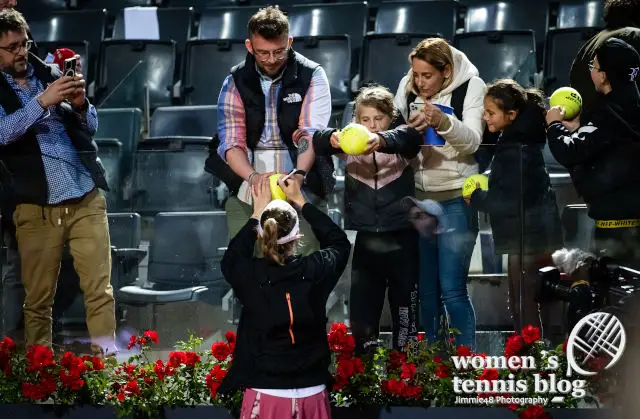Is the charm of current WTA players losing its grip on tennis fans? The Italian Tennis Federation raises a red flag as they voice concerns about declining spectator interest. Dive into the gripping tale of the Internazionali BNL d’Italia and unravel the enigma behind this unsettling trend.

Amidst the cake-gate and silent trophy ceremony at the Madrid Open, the controversy surrounding WTA players has spilled over to the Internazionali BNL d’Italia. Adding fuel to the fire, the Rome tournament raised eyebrows by commencing the women’s singles final at the perplexing hour of 11 pm. This decision left both fans and players in agony, but the drama didn’t end there. Angelo Binaghi, the president of the Italian Tennis Federation, commented on the excessive scheduling of women’s matches on center court, which prompted the crowd to flock to smaller courts, leading to overcrowding and security issues.
The Italian Open, one of the most prestigious tennis tournaments, features top players from all over the world. However, it looks like the current WTA players, including the world No.1 Iga Swiatek, don’t seem to attract enough spectators. They simply don’t have the charisma and star power of the Williams sisters and Maria Sharapova. Naomi Osaka was seen as a perfect person to fill that spot, but she hasn’t been as consistent and is now on a pregnancy leave.
Binaghi noted at the final press conference after the Internazionali BNL d’Italia:
The tournament will have to better manage the scheduling of women’s matches. The Williams sisters and Sharapova, who used to pack center court, are long gone. When we now schedule women’s matches on center court, the majority of the spectators leave center court and totally pack secondary courts to watch Italian players or men’s matches, causing overflow of crowds and major security issues.
Binaghi regrets scheduling some men’s matches on smaller courts and plans to change that practice in the future:
We shouldn’t have scheduled Fognini and other Italian players on secondary courts. Also, the top male players, including the four top players that ended up reaching the semifinals, were often scheduled on smaller courts in their early rounds.
Finding innovative ways to showcase the charisma and talent of current WTA players, while also accommodating fan preferences, will be vital for the future success and sustainability of women’s tennis. By acknowledging these challenges and proactively seeking solutions, the sport can ensure that the next generation of women’s tennis stars captures the imagination of fans worldwide, reigniting the excitement and allure of the game. (source: Ubitennis via Tennis Forum)




